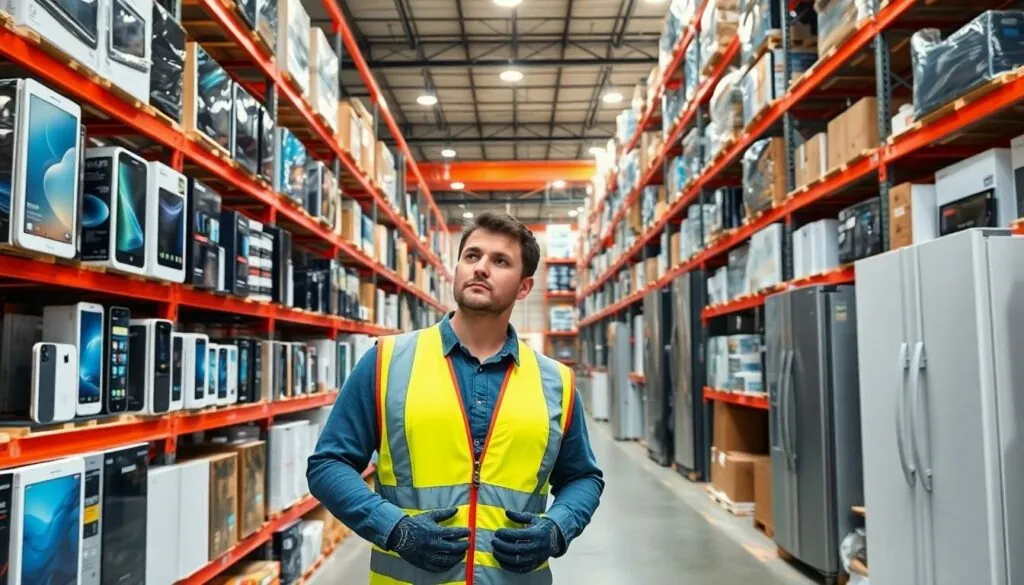Table of Contents
ToggleIn a world where the latest gadgets seem to drop faster than a hot potato, the consumer electronics supply chain is the unseen hero keeping everything in check. From smartphones to smart fridges, this intricate web of production and distribution ensures that tech enthusiasts get their hands on the coolest devices without a hitch. But what happens behind the scenes? Spoiler alert: it’s not all smooth sailing!
Overview Of Consumer Electronics Supply Chain
The consumer electronics supply chain consists of multiple interconnected stages, including procurement, manufacturing, distribution, and retail. Procurement involves sourcing raw materials and components from various global suppliers. Electronic components, such as semiconductors and circuit boards, require precise specifications and high standards for quality.
Manufacturing is a complex process that integrates advanced technology and skilled labor. Factories often operate under tight deadlines to meet consumer demand. Automation plays a significant role in enhancing efficiency while maintaining quality.
Distribution covers logistics, encompassing transportation and warehousing of finished products. Efficient distribution systems reduce lead times and help maintain stock availability. Companies utilize advanced analytics to optimize routing and inventory management.
Retailing plays a critical part in delivering products directly to consumers. Both online and brick-and-mortar stores provide accessibility and convenience. Retail strategies increasingly focus on consumer preferences, influencing purchasing decisions.
Challenges frequently arise throughout the supply chain. Fluctuations in demand can lead to overstocks or shortages. Additionally, geopolitical factors and trade regulations impact sourcing and production timelines. Supplier relationships often require ongoing management to ensure flexibility and responsiveness.
Real-time data tracking and inventory management systems enhance visibility and facilitate decision-making. Collaboration among supply chain partners supports efficient operations. By leveraging technology, companies adapt to market changes and consumer trends.
Understanding the nuances of the consumer electronics supply chain is vital. Efficient operations directly influence the availability of innovative devices that consumers expect. Customer satisfaction hinges on a seamless connection between these stages.
Key Players In The Supply Chain

The consumer electronics supply chain relies on several key players who ensure the smooth flow of products from concept to consumer. Understanding these roles highlights the interconnectedness of the industry.
Manufacturers
Manufacturers serve as the backbone of the supply chain by transforming raw materials into finished products. Large companies, such as Samsung and Apple, utilize cutting-edge technology and a skilled workforce to produce devices like smartphones and laptops. Leading manufacturers often establish partnerships with component suppliers, ensuring high-quality inputs such as semiconductors and display screens. Production facilities, located worldwide, help meet varying consumer demands. By optimizing their processes, manufacturers can enhance efficiency and reduce lead times.
Distributors
Distributors act as intermediaries between manufacturers and retailers, managing the logistics of transporting products. They focus on ensuring timely delivery to various markets, adapting to changing demand patterns. Companies such as Ingram Micro and Tech Data excel in maintaining extensive networks and warehouses to facilitate these operations. Advanced analytics play a crucial role in their distribution processes, helping to optimize routing and inventory levels. Successful distributors build strong relationships with manufacturers, enabling quicker responses to market fluctuations.
Retailers
Retailers represent the final link in the supply chain, bringing consumer electronics directly to buyers. Both online platforms like Amazon and brick-and-mortar stores like Best Buy play essential roles in this space. Retailers cater to consumer preferences by showcasing the latest gadgets while offering a range of pricing options. They often leverage data analytics to understand market trends and adjust inventory accordingly. Strong marketing strategies and customer service are vital for attracting and retaining customers in today’s competitive landscape.
Challenges Facing The Consumer Electronics Supply Chain
The consumer electronics supply chain encounters several challenges that affect its efficiency and responsiveness. These issues include component shortages, logistics complications, and fluctuations in market demand.
Component Shortages
Component shortages pose significant obstacles for manufacturers. The ongoing scarcity of critical components, particularly semiconductors, disrupts production timelines and increases costs. Manufacturers like Apple and Samsung rely heavily on a consistent supply of these components. When shortages occur, delays in product launches happen, affecting consumer accessibility. Strategies such as diversifying suppliers and investing in domestic production can help mitigate these shortages.
Logistics Issues
Logistics issues frequently impede the smooth flow of products through the supply chain. Transportation disruptions, including port congestion and labor shortages, can delay deliveries. Advanced analytics play a vital role in optimizing logistics operations to address these challenges. Companies utilize data to streamline routing and manage inventory effectively. As supply chains also depend on global networks, geopolitical tensions can further complicate logistics efforts.
Market Demand Fluctuations
Market demand fluctuations challenge the consumer electronics supply chain by creating uncertainty. Seasonal spikes and changing consumer preferences often lead to overstock or stockouts. For instance, during holiday seasons, demand for electronics can surge unexpectedly. Companies must employ agile forecasting methods to predict these trends accurately. Maintaining flexible production schedules allows companies to respond swiftly to evolving market conditions.
Innovations And Trends In The Supply Chain
Recent advancements significantly reshape the consumer electronics supply chain, enhancing efficiency and sustainability.
Automation And Technology
Automation plays a crucial role in streamlining supply chain operations. Robotics and AI streamline manufacturing processes, allowing companies to increase productivity. Smart warehousing technologies, like automated inventory management, reduce human error and improve accuracy. Advanced analytics tools enable real-time data assessment, empowering effective decision-making regarding procurement and logistics. IoT devices monitor equipment health, predicting maintenance needs ahead of failures. Machine learning algorithms optimize routing and inventory levels, lowering costs while ensuring timely deliveries. These innovations foster agility in responding to fluctuations in consumer demand.
Sustainability Initiatives
Sustainability initiatives are becoming a priority within the consumer electronics supply chain. Companies are focusing on reducing their carbon footprints through eco-friendly packaging and energy-efficient manufacturing processes. Sourcing materials responsibly, particularly rare metals, ensures minimal environmental impact. Many organizations are adopting circular economy principles, emphasizing recycling and refurbishing electronic products to extend their lifecycle. Stakeholder collaboration in sustainability efforts enhances overall resilience and social responsibility. Corporate transparency in supply chain practices builds consumer trust, aligning with growing market demand for environmentally conscious products. These steps contribute to a more sustainable future in consumer electronics.
The consumer electronics supply chain is an intricate web that ensures the latest technology reaches consumers efficiently. As the industry evolves, companies must adapt to challenges such as component shortages and logistics disruptions. Embracing automation and advanced analytics can significantly enhance productivity and responsiveness.
Sustainability is also becoming a key consideration, with many organizations prioritizing eco-friendly practices and circular economy principles. By focusing on responsible sourcing and recycling, the industry is not only meeting consumer demands but also contributing to a healthier planet.
Understanding these dynamics will empower stakeholders to navigate the complexities of the supply chain and drive innovation in the consumer electronics sector.



